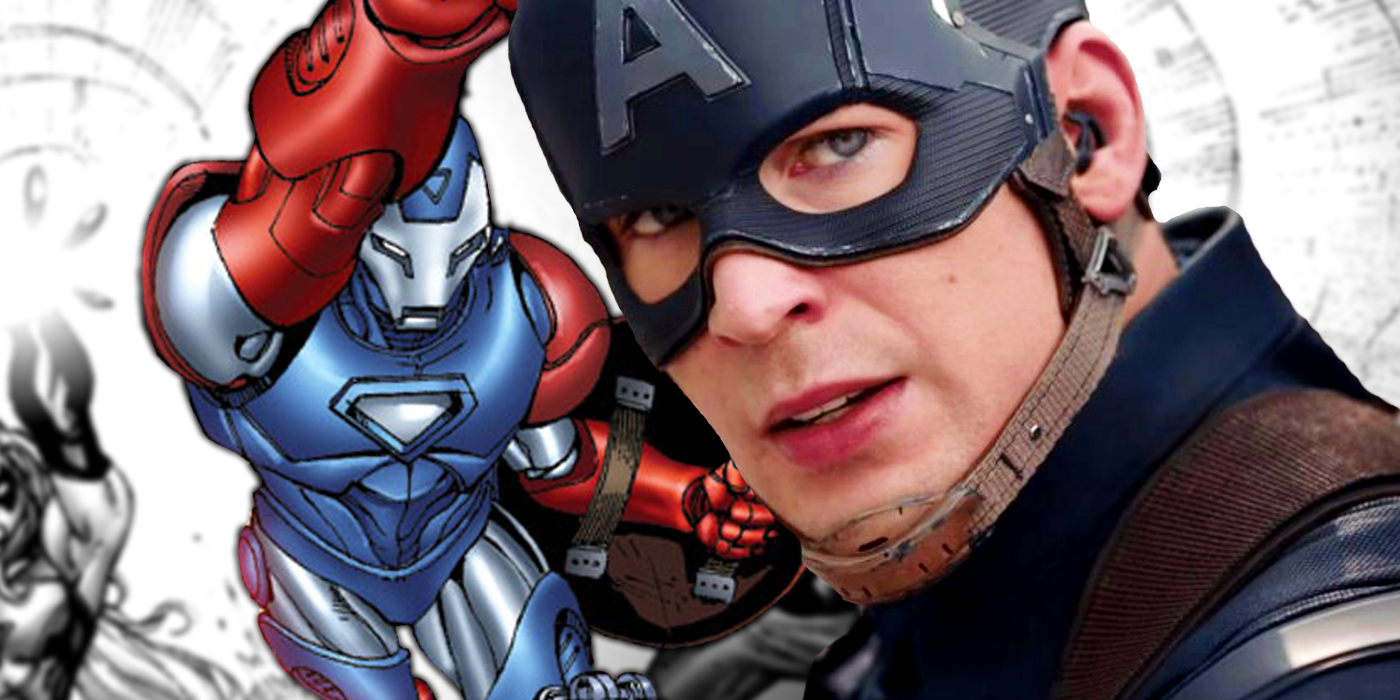In Civil War, Captain America and Iron Man clashed in an ideological conflict that tore the superhuman community apart. Steve and Tony went to the mat for their conflicting conceptions of liberty vs responsibility, leading to Captain America’s tragic assassination and Iron Man’s elevation to the head of S.H.I.E.L.D. But events didn’t have to go that way, and Tony Stark actually got a glimpse at another path in which he was the fallen hero, and Steve Rogers was the armored Avenger.
In What If? Civil War #1‘s ‘What If Captain America Led All the Heroes Against Registration?’ (from Kevin Grevioux, Gustavo Duarte, Sandu Florea, Victor Olazaba, Scott Koblish, Gustavo Duarte, and Joe Caramagna), Uatu the Watcher shows Iron Man what would have happened if, before the events of Civil War, Tony Stark had been killed during the events of Iron Man: Extremis. After the Avengers mourn Tony and defeat the supervillain Mallen, the Stamford Tragedy once again claims countless innocent lives, turning public sentiment against superheroes. But this time, without Tony to act as an alternative figurehead, Marvel’s superheroes put aside their reservations and unite behind Captain America and his anti-registration mission.
Sadly, without Tony to steer the government’s response, the human supremacist and former Avengers liaison Henry Gyrich is able to fill the vacuum, redirecting the government’s anti-mutant Sentinel program to take down Captain America’s forces, killing Spider-Man and the Invisible Woman. After realizing he’s losing the battle for public opinion, Captain America decides the heroes need additional inspiration, donning an Iron Man suit Tony gifted him shortly before his death. Ironically, Steve becomes the new Iron Man as a tribute to Tony Stark, believing that were he alive, he’d be fighting right alongside them.
Captain America wears the new Iron Man armor into combat, striking a major blow against the Sentinels, but experiences a crisis of conscience when he realizes they’re being piloted by young soldiers fighting for their country. As in Civil War, he orders the other heroes to stand down rather than hurt those who don’t deserve it, but this time he escapes being arrested. With the heroes in hiding, supervillains become a far more serious threat, and Gyrich unleashes an army of Thor clones who end up killing Captain America. After Cap’s death is covered up and he’s framed for the death of James Rhodes, Gyrich is elected president, reflecting on his mistakes during this alternate Civil War. Tragically, in the world where Marvel’s heroes actually worked together against registration, even more heroes perished, and the bad guys won.
This dark alternate ending of the superhuman Civil War underlines how unpredictable conflict can be, and even hints that despite some genuinely dark deeds, Iron Man was the best opponent Captain America could have hoped for. But the most tragic part of the story is Captain America’s faith that Iron Man would agree with his position. Seeing Tony as an “honorable man,” Captain America doesn’t just wrongly assume they’d have been allies, but actually takes up the Iron Man armor, turning Tony’s alter ego into an anti-registration symbol.
Steve becoming the new Iron Man shows how, in the actual events of Civil War, Tony’s stance seemed to betray the love and respect Steve had for him, explaining why Captain America was unable to compromise or quit until things had gone too far. To Captain America, Iron Man’s heroism meant he should have been totally opposed to superhuman registration, and when Tony proved that wasn’t the case, Steve doubted Tony’s principles, not the absolutism of his own position. Thankfully, Captain America and Iron Man have made efforts to mend their relationship since the actual Civil War – a process that was likely helped by Tony learning that Steve would have died in his armor if things had gone differently.
About The Author

